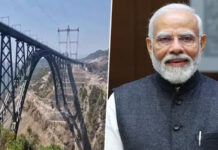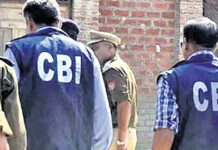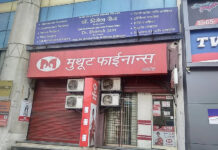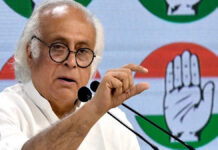Another rape in UP shows why we need to implement police reforms now and free the forces from political pressure
There is no end to the excesses that get committed in this country and shamefully no end to our mute tolerance, nay acceptance, of them as a societal truth than tragedy. Too bad it happened, we reason, and move on. Too bad, it happened, but what can we do? Precisely because the symbols of the State do nothing to punish offenders or uphold justice. In fact, they legitimise them by letting them off the hook. And that medieval powerplay of the hunter and the hunted, that masochistic intimidation of the vulnerable prey and the one-sided narrative of the dominator over the dominated continue. So barely a day after the Dalit gang-rape victim of Hathras, Uttar Pradesh, died, another Dalit woman met the same fate while returning home from work in Balrampur district. Of course, the police claims there was no rape in the Hathras case, quoting a forensic report, but severe assault. Does that diminish the taking of a life in the end? What about the rape of collective conscience? But when nobody questions the police for forcibly cremating the Hathras girl, denying her parents and family that right and dignity, literally wishing away the taint on her upper caste rapists/killers, then what does one expect? When a Dalit girl’s misfortune is considered a threat to societal hierarchies — apparently bigger than national security and, therefore, deserving a hushed cover-up — what can be more morally depraved? And when the police, as an unabashed tool of State power, condones the crime by not following the rule of law and processes as it is mandated to do, when it abandons the victimised, there is legal sanction of a lopsided thinking that emboldens and encourages offenders. When a Chief Minister, who has been thriving on casteist politics just like his predecessors, quotes the Prime Minister’s concern on Hathras instead of working on his promise to end “jungle raj” for good, he only ends up mimicking an administrative drill routinised by successive regimes. A drill that privileges their casteist constituencies at the expense of others. Hence the repetitive excesses on Dalits, women and minorities continue to spiral in UP making it the worst State for anybody vulnerable because of birth or gender. Only last year, the Minister of State for Home Affairs, G Kishan Reddy, while replying to an unstarred question in the Lok Sabha, had confirmed that Uttar Pradesh accounted for 43 per cent of the total number of instances registered for harassment against minorities and Dalits. It also tops the rape chart and according to the National Crime Records Bureau (NCRB), reported the most cases of violence against women in 2019.
The best that the Uttar Pradesh police has done and continues to do is to impose Section 144 to can every trouble, debate and dissent, like it has done by stopping Opposition political leaders from reaching Hathras to meet the girl’s family. The Chief Minister, of course, chose to commiserate with the family from the safety of video-conferencing. Nobody can yet explain why the police took 10 days to register a first information report (FIR) in the Hathras case and took no action as the brutalised girl lay in hospital for 15 days. That’s because non-action has many precedents, the most recent being the Unnao rape case in which a girl was gang-raped in June 2017 but her rapist, BJP legislator Kuldeep Singh Sengar, was convicted in December 2019. Or take the recent encounter killing of the underworld don Vikas Dubey, that snuffed out all information we could have had on the politico-criminal nexus in the State. Yet the UP police at one time had been a professional force in the country but now seems co-opted by the executive. Sadly, for all the recommendations on police reforms and the Supreme Court’s directive to set up a police complaint authority at the State and district level, compliance is a far cry. The top court had even recommended the separation of investigation and law and order functions so that the police could be freed from a partisan grip. While insulating the forces, the top court had studied an old report of 1979, where the Bureau of Police Research and Development had warned that excessive control by the political executive over the police has the inherent danger of making the latter a tool for subverting the process of law, promoting the growth of authoritarianism and shaking the very foundations of democracy. The police being integral to the criminal justice system, almost all its actions have to be ultimately placed before judicial officers. A recommendation was in fact made to introduce a provision in Section 311 of CrPC where any court would have the powers to direct the investigating officer or the supervisory officer to take appropriate action for proper investigation. Certain clauses need to be worked out for protecting the victim, too. There should be no restrictions on who can submit a complaint as this would imply distrust of the affected party. Neither should the victim be made to file a sworn affidavit, which creates a burden, particularly on the poor, instead of encouraging them to come forward. Besides, the police needs to be made aware about the degree of sensitivity with which certain cases need to be handled. With reforms, the forces would actually be able to serve society instead of controlling it.




























